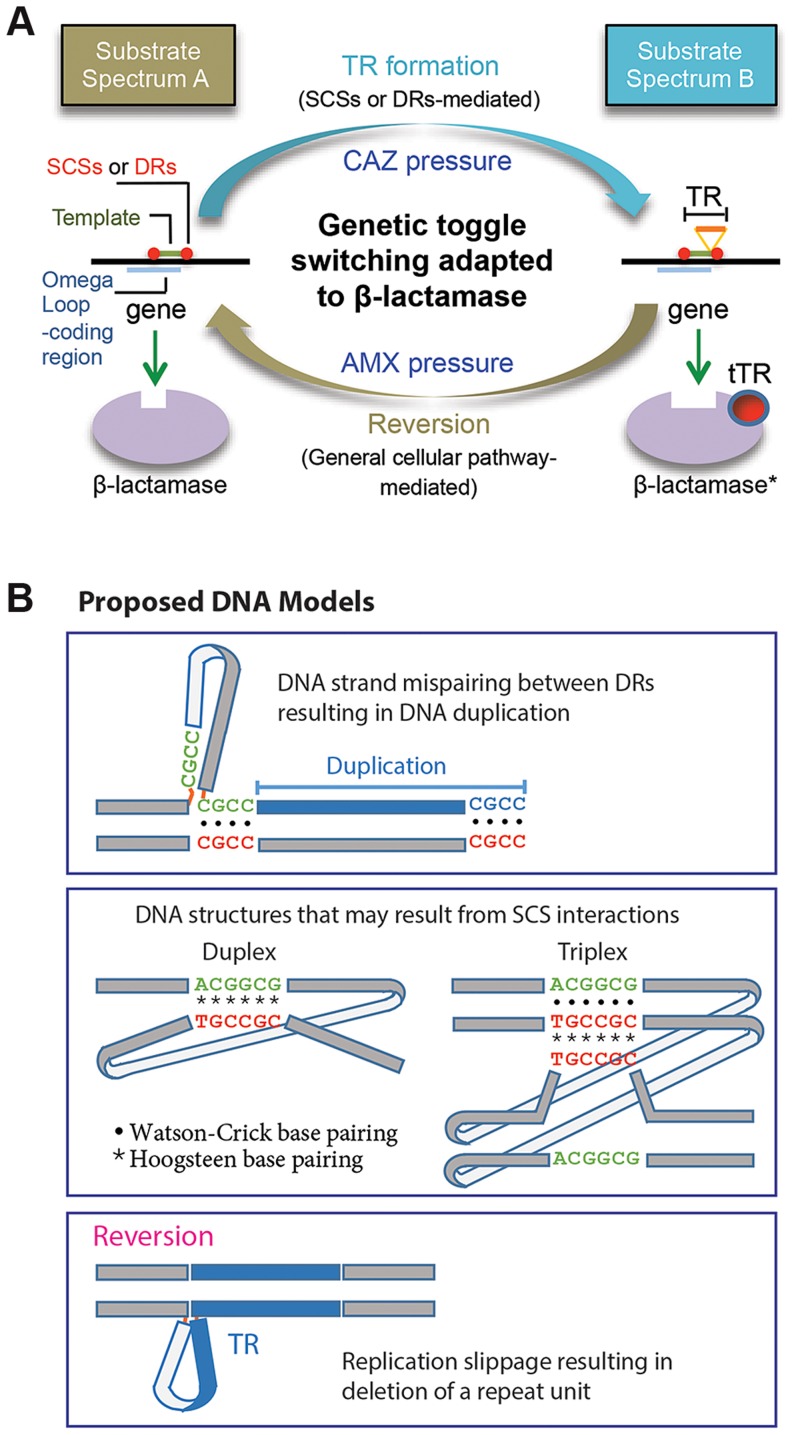Figure 7. Proposed models.
A. A model for the DNA duplication-reversion cycle serving as a genetic toggling mechanism for the β-lactamase substrate spectrum. Same-strand complementary sequences (SCSs)- or direct repeat-mediated DNA duplication can be selected for in a β-lactamase gene by exposure to ceftazidime (CAZ). The resulting tandem repeat (TR) in the omega loop encodes a duplicated peptide, which results in an alteration in the active site cavity extending the substrate spectrum to include CAZ (substrate spectrum B). The β-lactamase gene with a TR mutation can be reverted to the wild type by exposure to an original antibiotic, amoxicillin (AMX) (substrate spectrum A). The reversion of the TR does not require direct repeats or SCSs but is likely mediated by the replication slippage mechanism, involving general cellular pathway. B. Models for DNA secondary structures. A model is shown for mispaired direct repeats (DRs) that can occur during DNA replication, leading to DNA duplication of the bordered DNA template. TRs 1 to 3 (Fig. 1A) and M-TRs 1 to 2 (Fig. 2C) may have resulted from this mechanism. Two models of DNA structures that may form through non-canonical base pairings between SCS elements. Such DNA structures may predispose to DNA duplication via an unknown mechanism. Lastly, a model is shown for a DNA structure formed by strand slippage during replication, which leads to reversion.

